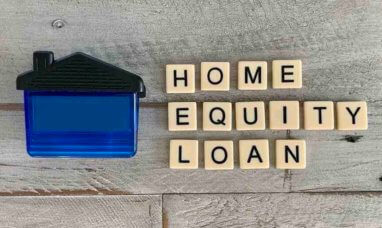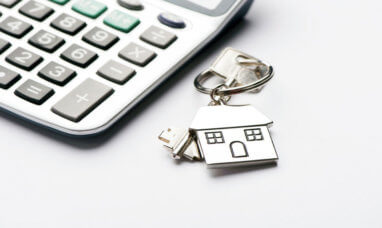When a marriage ends in divorce, tough decisions must be made. One of the hardest decisions to come to is how to fairly divide shared property. Ideally, a couple can make an amicable decision as to who gets what, including assets, property, and debt.
But some items, like a home, are much more complicated to split or divide. A lot goes into dealing with a home during a divorce, including how to split the home value and the mortgage. This article will cover how to split home value in a divorce.
Even if your divorce is amicable, it’s recommended that both parties order an appraisal to determine the value of the home. Once there is an agreement as to the home’s value, each partner will subtract what they owe. The remaining balance is their equity. The former couple will then have to decide whether each would like to sell or retain their equity.
The partners should consider several options depending on what they would like to do with their home and equity. Ideally, the ex-couple can agree on an option that satisfies both parties.
Top 3 Options for Splitting the Home
There are three ways to handle a home in a divorce:
-
-
- Sell the house and split proceeds
- One partner keeps the home and refinances to remove the other from the loan
- Both ex-partners keep the house temporarily
-
While you may initially lean towards one of these options, it’s best to weigh each of them to make a decision that is best for all parties. Here’s what you need to know about each of these options.
Option 1: Sell and Split the Proceeds
The quickest, simplest, and cleanest way to divide equity in the home is to sell it. By selling the house, you and your partner can pay off any of the remaining mortgage debt. After paying for sale-related expenses, taxes, and any other fees, the remaining money should be split evenly.
Though it’s not the easiest decision to make, selling the house makes it much easier for both ex-spouses to untangle and move on with their lives.
Option 2: One Partner Keeps the Home and Refinances
If selling isn’t an option, or if one of the partners is adamant about staying in the home, the next best option is for one partner to become the sole owner. While negotiating a divorce, a house buyout can be part of the settlement or a gradual process. If both partners are on the home’s mortgage, the loan will need to be refinanced.
In this scenario, refinancing serves several purposes, including:
-
-
-
- Removing the other partner from the mortgage so that the home is no longer a joint asset
- Paying off outstanding mortgage debt by replacing the old loan with a new one
- Freeing up cash so that the partner retaining the home can buy out the other’s equity share
-
-
When refinancing a house after a divorce, the new loan will only be based on a single income. This can pose a problem if the original mortgage was approved based on combined income. In some instances, it’s unrealistic and financially impossible for one of the partners to afford the mortgage on their own.
To qualify, the sole owner must have a steady income, a decent debt-to-income ratio, and a good credit score. You can use a mortgage debt-to-income ratio worksheet to calculate if you can comfortably afford the loan payment on your own.
But what do you do if your ex-husband or ex-wife won’t refinance? In this instance, we suggest contacting a divorce lawyer in your area or considering option 3.
Option 3: Both Partners Keep the House
Selling isn’t always the best option, especially in a buyer’s market. If the ex-couple owes more on the house than it’s worth, or if they can’t afford to live separately, sharing the home is always an option.
This can be done in several ways. If there is room for the ex-partners to be separate while cohabitating, living together is a great temporary option.
Or, one partner can move out but continue to help pay the mortgage. This is very common for ex-couples that have school-aged children.
Eventually, the ex-couple can choose to sell the home, or one can buy out the other’s equity.
How Is Home Equity Divided in a Divorce?
There are several factors to consider when figuring out how to equally divide a home’s equity in a divorce. Here’s a simplified scenario of how an ex-couple can distribute home equity.
A couple owes $150,000 on a home. After having the home appraised, the GPAR appraisal form states that the house is worth $450,000. The total equity in the house is $300,000. To determine the amount of equity in the home, subtract the owed principal amount from the appraised value.
If the equity is split right down the middle, both partners have $150,000 in equity. The partner who owns the home after refinancing would need a loan for $300,000. This amount covers:
-
-
- The remaining principal balance ($150,000)
- $150,000 to buy out the other partner’s half of the equity
-
In this scenario, the ex-spouse who leaves the home is paid $150,000 and leaves the relationship with no mortgage. This person also has no stake in any future home equity. This means if the equity in the home grows to $400,000, the ex-spouse who left the home isn’t entitled to any of it.
The person who keeps the home has $150,000 in equity, a $300,000 mortgage, and any future equity based on the home’s value. They’re also solely responsible for making mortgage payments each month.
Summary of Options
Each of the three options for a divorcing couple has its pros and cons. Whether you choose to sell the house or keep it, there’s no right or wrong answer to dealing with a home while getting divorced.
What’s most important is that you come not only to an amicable decision, but also to one that makes sense and protects everyone’s best interest. Consider factors such as children, pets, and the home’s value before deciding the best course of action for dealing with the home.
The best thing an ex-couple can do is to sit down, look at all the options, and weigh the pros and cons. Consider both short- and long-term impacts before making a decision.
Featured image: Megapixl








